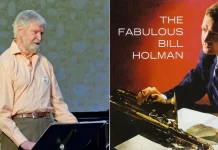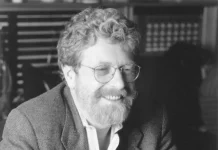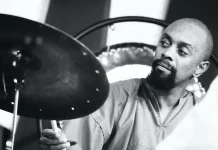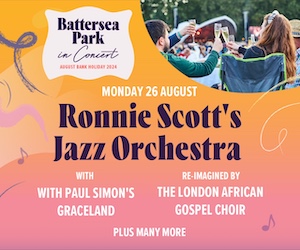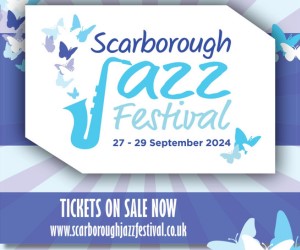
Following the recent deaths of saxophonist Bernt Rosengren and double-bassist Georg Riedel, on 18 May this year Swedish – and world – jazz lost another major figure with the passing, after a period of illness, of Palle Danielsson.
“You’re born, you die. It’s what you do in between that counts!” Thus the simple and irrefutable wisdom of Art Blakey. Born in Stockholm on 15 May 1946, Palle Danielsson will be remembered by many initially for his work in the 1970s with Keith Jarrett, Jan Garbarek and Jon Christensen in what was known as the Belonging band or Jarrett’s European Quartet.
This superb outfit cut two long-classic studio albums, the 1974 Belonging and the 1977 My Song as well as three live sessions, the two-CD Nude Ants: Live At The Village Vanguard (1979), Personal Mountains and Sleeper, the last two also recorded in 1979, in Tokyo.
Excellent as all this work is, Danielsson’s life and artistry were distinguished more by the sort of boundless creativity that almost beggars belief. A long-time collaborator with such distinguished pianists as Bobo Stenson (especially) and Rita Marcotulli, Danielsson was as happy playing with Lee Konitz, Steve Kuhn or Michel Petrucciani as he was working with free trombonists Albert Mangesdorff and Eje Thelin. A master of pizzicato and arco, he was also a fine if occasional composer of characterful, often rhythmically intriguing pieces.
Small wonder, then, that in his sleeve note for the 1994 Contra Post on Caprice Records – the double-bassist’s first release as leader, with the opening, relatively brief solo title track epitomising his robust, rich and resonant tone and spacious depth of melodic phrase – the Swedish producer Lars Westin should write “Without any support from statistics I dare say that Palle Danielsson is Sweden’s most recorded jazz performer […] His sensitivity, combined with an amazing technical virtuosity and highly developed sense of form and dynamics, has made him a dream-come-true bassist for many musicians.”
As Ian Carr tells us in The Rough Guide To Jazz, Palle Danielsson started playing harmonica or slide-whistle when he was two years old. He began on violin six years later, switching to double bass when he was 13. Jazz, Stravinsky and Bartok had all become of interest to him and he took up his professional career at 15, doubling on bass and harmonica.
He studied at the Stockholm Royal Academy of Music between 1962 and 1966, at a time when the capital’s Gyllene Cirkeln (Golden Circle) jazz club was making waves with, e.g., the legendary visit of the Ornette Coleman Trio in 1965 – the year that the young Danielsson accompanied Bill Evans for two memorable November weeks at the club.
He visited the recording studios at this time with Swedish singer Monica Zetterlund, in the company of, a.o., his sister, the pianist and composer Monica Dominique: see the RCA/Swedish BMG boxed set Ett Lingonris Som Satts I CocktailGlas. A few years later, Danielsson participated in two of the Norwegian singer Karin Krog’s most significant albums, Joy and Different Days, Different Ways. And many a moon later, in 2012 bassist brother and pianist sister would record their album Togetherness.
By the mid-1960s the creative paths of Danielsson and his compatriot Stenson had long gelled most fruitfully. Danielsson had also begun to work with the innovative Norwegian drummer Jon Christensen, as they played with the American pianist Steve Kuhn. And Danielsson also worked around this time with such diverse figures as Dexter Gordon, Stan Getz and George Russell.
The early 1970s saw the emergence of two of the most consequential Scandinavian small groups of the decade: the all-Swedish Rena Rama quartet with Lennart Åberg (s, f), Stenson, Danielsson and Bengt Berger (d, pc) and the Jan Garbarek / Bobo Stenson (Norwegian/Swedish) Quartet with Danielsson and Christensen.
Both groups were extremely popular in Scandinavia, with the local press even making comparisons with the impact of the Beatles. Often using irregular or unusual meters, Rena Rama cut several world-ranging, folk-touched LPs for Caprice and JAPO; while the Garbarek / Stenson Quartet recorded the two surpassing ECM sessions Witchi-Tai-To (1973) and Dansere (1975) as well as the 1977 double Philips LP Ingentings Bjeller (Nothing’s Bells) with the Norwegian poet Jan Erik Vold. Danielsson contributed potent compositions to both ensembles: hear Kukka from Witchi-Tai-To and Circle Dance and Rumanian Folk Song from the 1977 JAPO release Landscapes.
Subsequently, Danielsson would come to work with a further host of innovative and world-class players, such as drummer Peter Erskine and pianist John Taylor. The sleeve note which John Kelman contributed to the 2016 ECM box-set reissue of the four CDs cut by this trio offers a succinct characterisation of the bassist’s many qualities, focusing on his work for the 1970s Jarrett and Garbarek / Stenson Quartets: “In both groups, Danielsson managed the perfect confluence of unshakable, deeply resonant and ever-reliable anchor with muscular, intuitive and intrinsically singable melodic foil.”
Danielsson contributed such distinctive yet group-conscious work to many other ECM sessions, led by, e.g., Anouar Brahem, Enrico Rava, Collin Walcott (with John Abercrombie, Don Cherry and Dom Um Romao), Edward Vesala (with, a.o., Palle Mikkelborg, Terje Rypdal and Tomasz Stanko), Charles Lloyd (with, a.o., Bobo Stenson), Dino Saluzzi, Lena Willemark and Ale Möller (on their folk-rinsed Nordan and Agram) and the aforementioned Peter Erskine (with John Taylor).
Some of Danielsson’s most beautiful latter-day work can be enjoyed on Taylor’s Angel Of The Presence on CamJazz, a 2004 trio session with drummer Martin France – sample Danielsson’s introductory figures to Kenny Wheeler’s Sweet Dulcinea – while some of his most historically significant playing is to be found on the several sessions which Bobo Stenson and he, Joakim Milder (ts) and Fredrik Norén (d) cut for the excellent Swedish Mirrors label. These were devoted to the music of the Coltrane-touched and tragically short-lived Swedish tenor saxophonist Börje Fredriksson (1937-1968), with whom Stenson and Danielsson had played in the 1960s. Hear Epilogue (1998) and Sister Maj’s Blouse In Concert: The Music of Börje Fredriksson (2006).
I count myself fortunate to have heard Palle Danielsson live several times: twice in 1976 with the Garbarek / Stenson Quartet at Oslo’s legendary Club 7; a further couple of times during the 1999 Selected Signs ECM Festival at the University of Brighton (where he appeared in Tomasz Stanko’s Litania sextet with Stenson, saxophonists Bernt Rosengren and Joakim Milder and drummer Anders Kjellberg) and once, some little while later, in London with the Peter Erskine Trio.
Apart from the great pleasure his music gave me, through conversation and some email correspondence I found Palle Danielsson to be a most generous and approachable, thoughtful and warm-hearted man, exactly as one might infer from such an inspiring lifetime of the most selfless yet affirmative, far-ranging and remarkable musicianship.
Let Bobo Stenson, who knew Palle so well and for so long, have the last word: “I first got together with Palle in school days, you know. So I think he must be the jazz musician I have known the longest. We were lucky. We always had a sort of intuitive understanding of each other’s playing, a kind of coupled radar relation if you like.
Whatever the context was, Palle was always very strong in the music, with his big beautiful sound and melodic phrasing; always there – like a rock or a tree, you might say – but at the same time, always ready to take off, open to that ‘something else’ that might make the music really shine and sing. While I’m deeply sad right now, I try to think back with joy and remember all those special moments Palle and I shared through the years. And I am so grateful for that.”
In 2023 Palle Danielsson received a Lifetime Achievement Award from the Swedish Jazz Association. He is survived by his sister Monica Dominique and his long-term partner, the Swedish artist Ulla Lööf.


